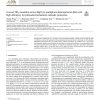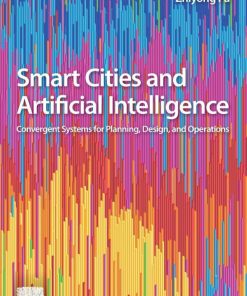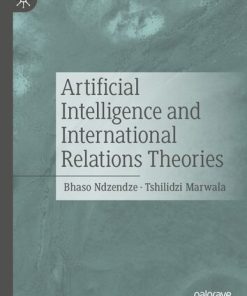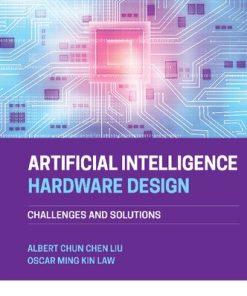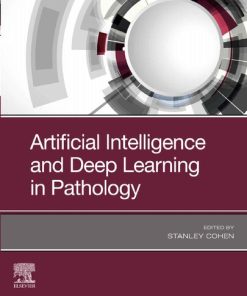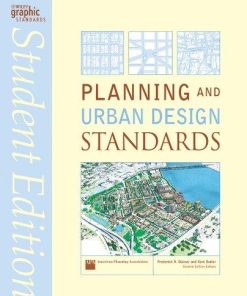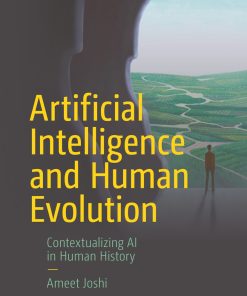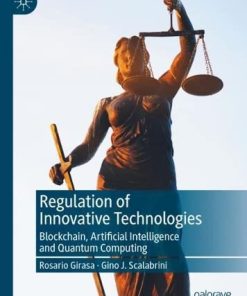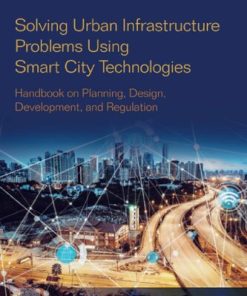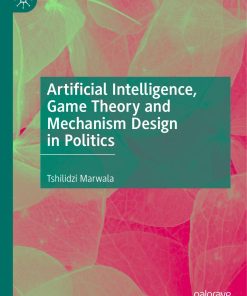(Ebook PDF) Artificial Intelligence in Urban Planning and Design Technologies Implementation and Impacts 1st Edition by Imdat As 0128239425 9780128239421 full chapters
$50.00 Original price was: $50.00.$25.00Current price is: $25.00.
Artificial Intelligence in Urban Planning and Design: Technologies, Implementation, and Impacts 1st Edition by Imdat As – Ebook PDF Instant Download/DeliveryISBN: 0128239425, 9780128239421
Full download Artificial Intelligence in Urban Planning and Design: Technologies, Implementation, and Impacts 1st Edition after payment.
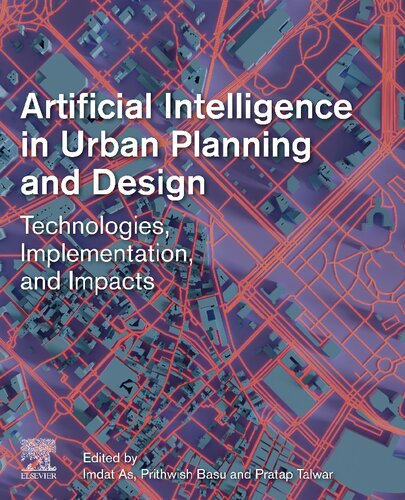
Product details:
ISBN-10 : 0128239425
ISBN-13 : 9780128239421
Author : Imdat As
Artificial Intelligence in Urban Planning and Design: Technologies, Implementation, and Impacts is the most comprehensive resource available on the state of Artificial Intelligence (AI) as it relates to smart city planning and urban design. The book explains nascent applications of AI technologies in urban design and city planning, providing a thorough overview of AI-based solutions. It offers a framework for discussion of theoretical foundations of AI, AI applications in the urban design, AI-based research and information systems, and AI-based generative design systems.
Artificial Intelligence in Urban Planning and Design: Technologies, Implementation, and Impacts 1st Table of contents:
Part 1: Theoretical foundations
Chapter 1: A new agenda for AI-based urban design and planning
Abstract
Acknowledgment
Embracing AI to recalibrate the master plan
The future of work: AI and the disruption of planning and urban design practice
Unpacking artificial intelligence for planners and urban designers
Fundamental AI components for disrupting planning and urban design practice
AI enhancing traditional planning and urban design services workflow
AI and the challenges to expertise
References
Chapter 2: AI and the limits of human creativity in urban planning and design
Abstract
Introduction
Architectural lessons
The limits of human creativity
References
Chapter 3: Complexity science for urban solutions
Abstract
Acknowledgments
Introduction
Artificial intelligence (AI) in the built environment
Complexity science and urban systems
Key aspects of spatial network analysis
Computational social science and its AI applications
Summary
References
Part 2: AI tools and techniques
Chapter 4: Classes of AI tools, techniques, and methods
Abstract
Acknowledgments
Introduction
A working definition of AI in urban planning and design
Tools: Algorithmic clades in urban planning and design
Techniques: A machine’s-eye view of the city
Methods: A snapshot from the practitioner’s desktop
Conclusions
References
Chapter 5: Urban form analysis through morphometry and machine learning
Abstract
Urban form—A basic definition
Urban morphometry
Context-rich urban analysis and generation using machine learning
Urban morphometry with advanced statistics
References
Chapter 6: AI-driven BIM on the cloud
Abstract
Introduction
Background
AI-driven building information model on the cloud
Case studies
Conclusions
References
Part 3: AI in urban scale research
Chapter 7: Deep learning in urban analysis for health
Abstract
Introduction
Urban morphology and health
Deep learning in urban analysis for health
Applications of discriminative deep learning in urban health analysis
Applications of generative deep learning for urban health analysis
Challenges, opportunities, and next steps
References
Chapter 8: Spatial design of energy self-sufficient communities
Abstract
Acknowledgments
Cities and energy resiliency
Designing for energy self-sufficient urban settlements
Urban form and energy consumption in communities
Interpreting the black box
Closure
References
Further reading
Chapter 9: The image of the city through the eyes of machine reasoning
Abstract
Acknowledgment
Introduction
Background
Methods, tools, and techniques
Case study
Conclusions
References
Chapter 10: Optimizing urban grid layouts using proximity metrics
Abstract
Acknowledgments
Introduction
Materials and methods
Case study
Results
Discussion
References
Part 4: Case studies in urban design and planning
Chapter 11: Image analytics for urban planning: The case of the Barcelona Superblock
Abstract
Acknowledgment
The urgency for a new urbanism
Novel methods for image analytics
Conclusions
References
Chapter 12: Complexity science-based spatial performance analyses of UNStudio/DP Architects’ SUTD Campus and WOHA’s Kampung Admiralty
Abstract
Acknowledgment
Introduction
Analyses of two vertically integrated spatial networks
Methodology and research phases
Conclusions
References
Chapter 13: Understanding urban leisure walking behavior: Correlations between neighborhood features and fitness tracking data
Abstract
Introduction
Leisure walk
Methodology and data
Results
Destinations
Conclusion and future work
References
Chapter 14: Spacemaker.Ai: Using AI in developing urban block variations
Abstract
Generative design
Tools at Spacemaker
Case study
Conclusion
Chapter 15: Möbius evolver: Competitive exploration of urban massing strategies
Abstract
Acknowledgment
Introduction
Competitive evolutionary design exploration
Demonstration
Discussion
Conclusions
References
Chapter 16: Adaptive master plans: Flexible modular design strategies
Abstract
Introduction
Background
Methods
Applications
Conclusions
Notes
References
Chapter 17: SASAKI: Filling the design gap—Urban impressions with AI
Abstract
Introduction
Background
Identifying a “good enough” tool
Using GANs to generate urban impressions
Key takeaways
Toward a sketch tool prototype
Conclusions
References
Chapter 18: KPF: A retrospective view on urban planning AI for 2020
Abstract
Preamble
Crises and inventions
Evolution of tools
People also search for Artificial Intelligence in Urban Planning and Design: Technologies, Implementation, and Impacts 1st:
an urban planner is designing a new urban housing
urban artificial intelligence
artificial intelligence is being used in urban planning and design
artificial intelligence urban design
f artificial intelligence
Tags:
Artificial Intelligence,Urban Planning,Design,Technologies,Implementation,Impacts,Imdat As
You may also like…
Politics & Philosophy
Politics & Philosophy - International Relations
Computers - Artificial Intelligence (AI)
Computers - Artificial Intelligence (AI)
Artificial Intelligence and Deep Learning in Pathology 1st Edition
Uncategorized
Computers - Artificial Intelligence (AI)
Jurisprudence & Law - General & Miscellaneous Law
Engineering - Civil & Structural Engineering
Politics & Philosophy - International Relations
Artificial Intelligence, Game Theory and Mechanism Design in International Politics



